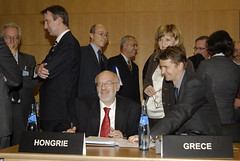
If you’re in a job hunt, nothing will negatively impact your success more than filling your resume with your duties, focusing on overused phrases, and spelling out a dry list of your jobs. The reason?
Employers want to hire not only a person that meets the qualifications for a particular role, but a SOLUTION–a candidate that can help solve business problems, lead work teams to productivity, or deliver cost savings to the organization.
All too often, job hunters commit a cardinal error by loading up their resumes with the wrong kind of information, meaning that the document fails to answer the “So what?” question for hiring managers.
In effect, this writing style will put your qualifications into a category whereby your background is seen as identical to other candidates vying for the same job-and that can’t be a good thing.
To correct this problem, start with a fundamental shift in the way you view the purpose of your resumechanging your focus from a dry list of “here’s what I did” to “here’s what I can do for YOU.”
Here are 3 main clues that your resume needs an overhaul in order to move an employer’s response from “So what?” to “Call for an interview:”
1) You forgot to emphasize results.
Today’s hiring managers are looking for consistent proof of performance. So how can you provide it? Start with a list of your contributions to the team and the company, then describe the effect on the employer’s bottom line.
The idea, of course, is to RID your resume of the obvious (everyone knows that an accountant manages the general ledger, managers supervise, and network administrators monitor servers), while giving employers a clear picture of the extent of what you can do.
Many people think that employers are focused on job duties and don’t want more details, while just the opposite is true. It’s of utmost importance to give the outcome of each task that you’ve initiated or completed while at work.
To do this, take EACH resume sentence and scrutinize it for results. Does it present just the facts, or does it convey what happened?
Rewrite each sentence with a clear focus on what happened after you took on that project, led a new team or developed new policies. You’ll be amazed at the difference in the responses to your resume.
2) You failed to be specific about your achievements.
This is probably the biggest problem found in most resumes circulating the Internet. It’s concise, focused description of your accomplishments that lands the interview.
For example, say you increased sales – by HOW MUCH? You implemented changes for efficiency that reduced hiring – by HOW MANY PEOPLE? If you increased new business – by WHAT PERCENTAGE?
“Grew revenue by 435% to $5 million by winning major contracts,” for example, drives your point home better than “Provided contract negotiation support.”
The best way to come up with these figures is to review each sentence in your resume to see if it can be quantified. Make a list of questions such as the ones noted above, and ask yourself for additional detail as if you were at a job interview.
Remember that figures in this case speak much louder than anything else you can use. Quantifying your contributions is an absolute MUST in order to make your credentials stand out above others, and to make the case that you bring verifiable strengths to your next job.
3) You copied or re-used phrases.
It seems basic, but many candidates bore hiring authorities by using the same wording repeatedly, or re-use what they’ve seen elsewhere.
For example, how catchy is the phrase “Responsible for…?” Yet, it populates the average resume at least a half-dozen times. Essentially, if you don’t use interesting verbiage on your resume, then don’t expect much interest from the reader.
A resume should be written to engage the hiring audience so that they want to know MORE about you, not less.
The good news is that there are more than 170,000 words in the English language, meaning that you have a lot of choices.
For example, “managed” can be changed to “directed,” “spearheaded,” “oversaw,” “championed,” “led,” etc. As you can see, there’s no need to re-use the same information to convey your point.
Revitalize your resume to deliver a powerful, compelling message, using what professional resume writers call “Power Verbs”, by consulting a thesaurus.
In summary, remember that your resume’s job is to give employers an accurate and powerful picture of your skills, and that going against conventional, outdated styles can be the right thing to do.
Since reading hundreds of resumes can wear down even the most energetic hiring manager, it’s best to leave the tedious resume wording for use by someone else, in order to market yourself as the PERFECT SOLUTION that will produce bottom-line results.
A unique resume authority, Laura Smith-Proulx, CCMC, CPRW, CIC is the Executive Director of An Expert Resume, global resume award nominee, and author of “How to Get Hired Faster: 10 Proven Strategies to Tap the Hidden Job Market.” Visit An Expert Resume for Laura’s FREE E-Course on “The 7 Biggest Resume Mistakes that Can Keep You from Your Dream Job… and How to Avoid Them.”
Image taken on 2009-09-28 15:16:08. Image Source. (Used with permission)
Related posts:
- Hired Now!You’re Talking Yourself Out of Getting a Job by Giving Wrong Answers to Interview Question
- Rethinking Information Work: A Career Guide for Librarians and Other Information Professionals
- What?s Wrong With Most Resumes?
- What’s wrong with my resume for a job as a waitress? No one seems interested?
- What?s Wrong With Most Cover Letters?
